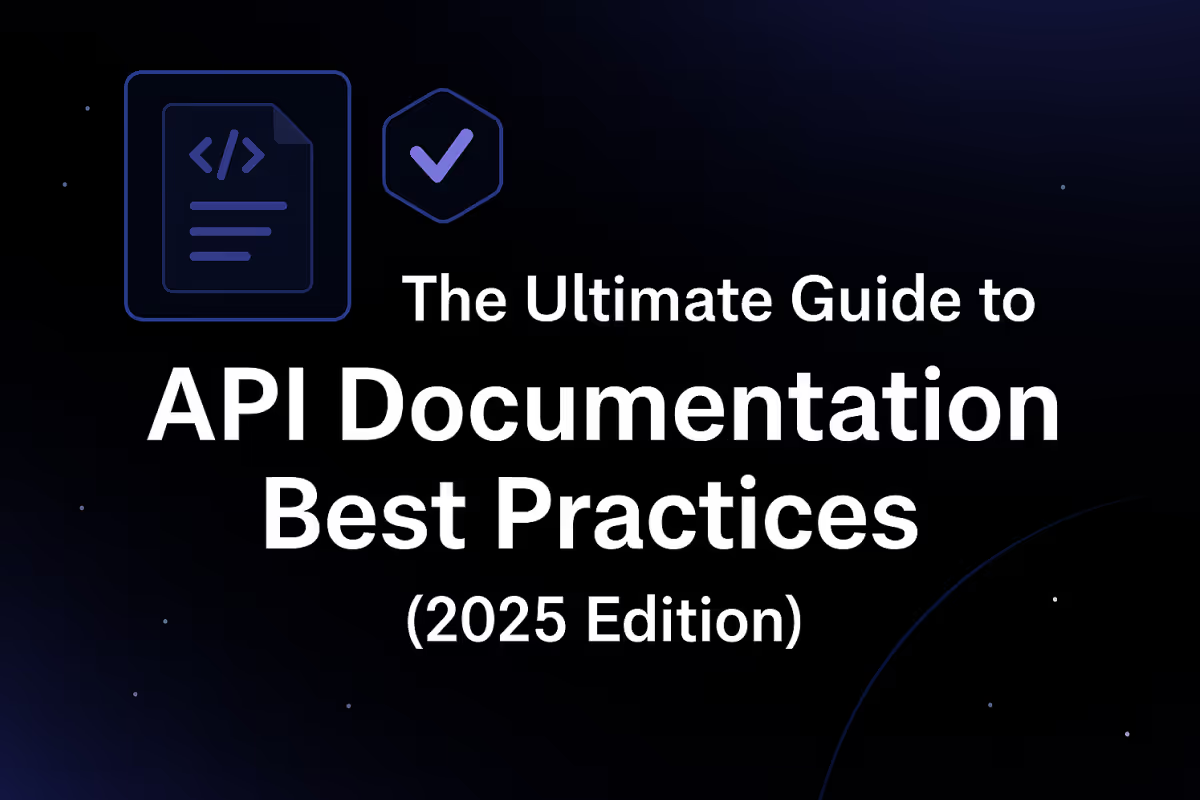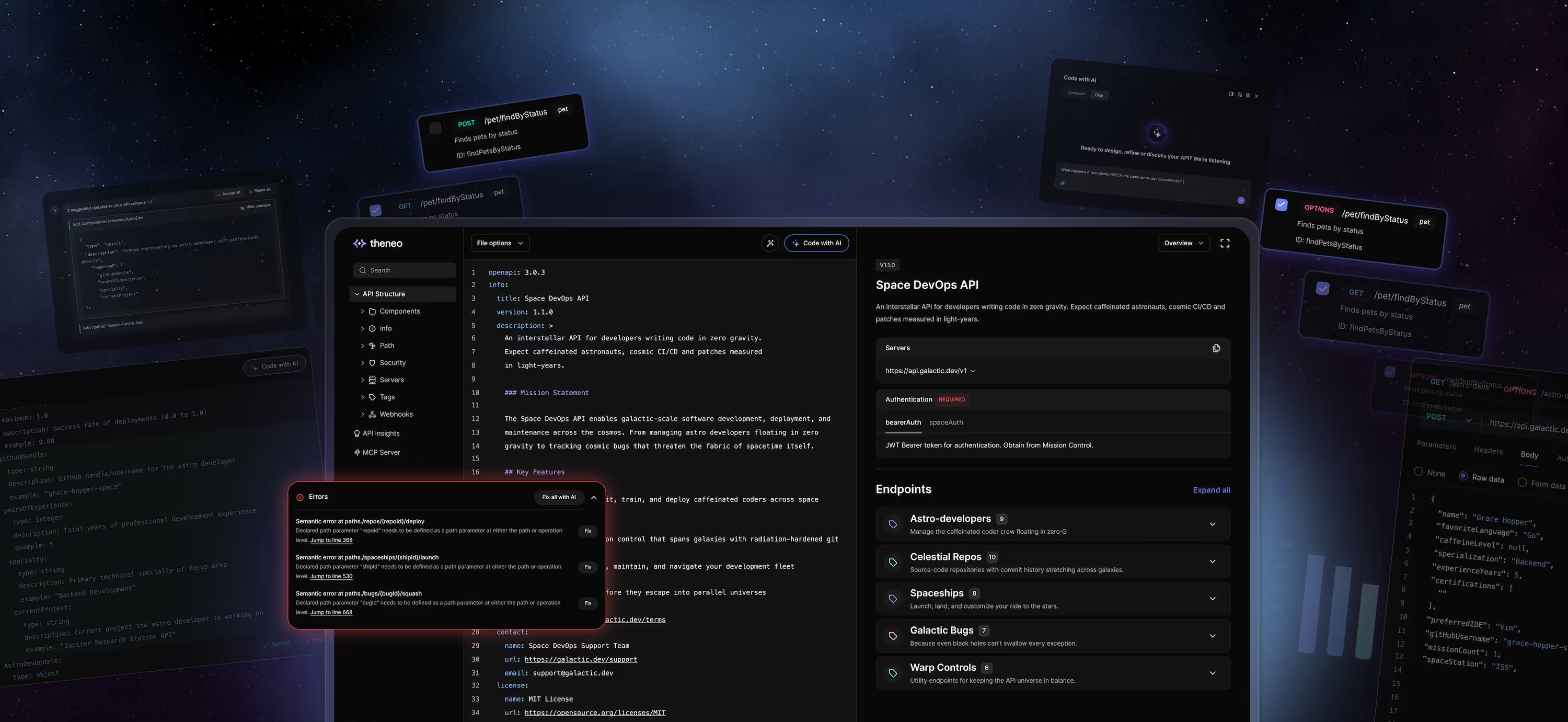The Art of API Documentation: Empowering Developers and Users Alike
Boost API adoption with effective documentation.

In the rapidly evolving digital landscape, Application Programming Interfaces (APIs) play a pivotal role in enabling seamless communication and integration between various software applications. However, for developers and users to truly harness the power of an API, they need a guiding light that illuminates its functionality, features, and implementation intricacies. This is where the art of API documentation comes into play. API documentation serves as a comprehensive resource, akin to a user manual, empowering developers and users alike with the knowledge and understanding necessary to effectively leverage an API. In this blog, we will explore the significance of API documentation, its impact on successful integration, and the best practices to create documentation that truly empowers and enables developers and users in their API-driven endeavors.
What Is API Documentation?
Before delving into API documentation, let's clarify the concept of an API. An API, or Application Programming Interface, serves as a mediator between two software applications, enabling seamless connectivity and data exchange. Virtually all digital activities we engage in rely on APIs to send and retrieve data from servers.
Given their significance, APIs can pose challenges for web and mobile developers who require a thorough understanding of their functionality for effective application development. This is precisely where API documentation becomes invaluable. Acting as a user manual for your API, documentation equips developers and users with comprehensive information essential for successful API utilization.
API documentation takes various forms, including how-to documents, tutorials, and reference guides, covering a wide range of information types. It provides detailed insights into the API's functionality, step-by-step guides, and practical examples of API usage.
To ensure accessibility, API documentation is typically made available to the public, enabling anyone who needs it to access the necessary information. This not only benefits developers already working with the API but also assists those evaluating the API's suitability for their specific purposes.
By providing well-crafted API documentation, SaaS businesses empower developers to navigate the complexities of their APIs, facilitating seamless integration into their applications. Furthermore, publicly accessible documentation enhances transparency and fosters trust among developers seeking reliable APIs for their projects.
Why Does API Documentation Matter?
The significance of API documentation cannot be overstated, as it directly impacts the success or failure of your API deployment. While developers possess problem-solving abilities, expecting them to inherently grasp every technical solution presented to them is unrealistic. The value of your API lies in its usability for the intended audience it serves.
Insufficient API documentation can lead developers to disregard your API altogether or face frustration during the implementation process. Both scenarios undermine the long-term success of your API. It is important to recognize that developers are well-connected within their field, often seeking recommendations and collaborating with peers experienced in specific processes.
By providing top-notch API documentation, you earn the praise and recommendations of developers in these circles. Conversely, sloppy or non-existent documentation can lead developers to actively discourage others from engaging with your API in the future.
Investing in comprehensive and well-structured API documentation establishes your credibility, increases the adoption rate of your API, and fosters positive relationships with developers. It empowers developers to effectively integrate and utilize your API, driving its widespread adoption and positioning your SaaS business for long-term success.
How Can I Generate High-Quality API Documentation?
Understanding the importance of solid API documentation in launching and promoting your API, we provide you with the tools you need to compete with tech giants like Stripe and Google. Introducing Theneo, our platform designed to simplify the process of creating beautiful and interactive API documentation. With just a few clicks, you can effortlessly generate complete API documentation that caters to both your tech-savvy and less tech-savvy team members.
When you embark on the documentation journey with Theneo, you begin by creating a new project, which automatically generates three essential documentation paragraphs. The API Reference offers a comprehensive summary of your API, outlining its features and the type of API it represents. The Authentication section provides in-depth information on how to authenticate the API, ensuring secure and seamless integration. Additionally, the Errors paragraph automatically outlines standard error types and status codes specific to your API. While these three sections serve the needs of most of our customers, you have the flexibility to customize your documentation further by adding or removing paragraphs to align with your specific requirements.


Enhancing your collections becomes a breeze with Theneo as you can conveniently drag and drop them into the documentation. You can effortlessly incorporate response codes and templates for error types and status messages. Our platform even autodetects base URLs throughout the process, streamlining the documentation creation.
Once your documentation is ready, it's time to publish. The process is simple and straightforward. You can specify whether your documentation should be public or private, and the generated share link will reflect your chosen privacy settings. Experience the power of Theneo by exploring an example of published documentation: Theneo Demo.
With Theneo, we make it effortless for SaaS businesses to create comprehensive, visually appealing, and user-friendly API documentation. Empower your team and users with documentation that enables seamless integration and enhances the value of your API.
Top 5 Practices for Exceptional API Documentation:
To ensure the effectiveness and user-friendliness of your API documentation, consider implementing the following best practices:
1. Go Step-by-Step: When creating API documentation, it's crucial to avoid assuming that certain steps are obvious. Omitting crucial information may inadvertently alienate developers who are unable to follow along. To address this, have another person from your team review the documentation and assess its clarity. If anything is unclear or missing, make necessary additions or modifications to ensure a seamless understanding.
2. Use Accessible Language: While API documentation primarily targets third-party developers, it's essential to strike a balance between technical language and simplicity. Incorporating both technical jargon for developers who prefer it and layman's terms for those with a less technical background can enhance overall accessibility. By adopting this approach, you cater to a wider range of users and foster better understanding of your API.
3. More Is More: Contrary to the popular saying "less is more," API documentation benefits from a comprehensive approach. When in doubt about whether to include certain details, it's advisable to err on the side of providing more information rather than leaving developers with unanswered questions. By offering comprehensive documentation, you empower developers to work efficiently and effectively with your API.
4. Provide Clear Examples and Use Cases: One of the most effective ways to enhance understanding and usage of your API is by including clear examples and use cases throughout the documentation. Developers often rely on practical demonstrations to grasp the concepts and functionalities of an API. By offering real-world scenarios and sample code snippets, you enable developers to visualize how your API can be implemented in different contexts, accelerating their learning and integration process.
5. Regularly Update and Maintain Documentation: API documentation should be treated as a living resource that evolves with your API. As your API undergoes updates, new features, and bug fixes, it's crucial to reflect those changes in the documentation promptly. Regularly reviewing and updating the documentation ensures that developers have access to accurate and up-to-date information. Additionally, consider incorporating a versioning system to clearly indicate different iterations of your API and provide documentation specific to each version, allowing developers to choose the appropriate documentation for their needs.
In addition to implementing these best practices, we highly recommend using Theneo's API documentation tool. Theneo provides a streamlined and user-friendly platform that makes it easy to create beautiful and interactive API documentation. With just a few clicks, you can create comprehensive documentation that targets both technical and non-technical users within your team. Theneo's tool allows you to effortlessly customize and enhance your documentation by adding specific paragraphs, organizing collections, and including response codes and error templates. By using Theneo, you can save time and resources while ensuring that your API documentation is of the highest quality. So when it comes to creating exceptional API documentation, make your job easier with Theneo and experience the benefits firsthand.
In summary, API documentation plays a critical role in the success of your API deployment. It serves as an important resource that helps developers and users alike by providing comprehensive and accessible information about your API's features, integration steps, and use cases. By following best practices, such as taking a step-by-step approach, using understandable language, including numerous examples, regularly updating documentation, and leveraging powerful tools like Theneo, you can ensure developers have the guidance they need to work seamlessly with your API. Investing time and effort in creating high-quality API documentation not only promotes adoption and usage, but also gives you credibility in the developer community. So make API documentation a priority and realize the full potential of your API while fostering strong relationships with developers and taking your business to new heights.
In the rapidly evolving digital landscape, Application Programming Interfaces (APIs) play a pivotal role in enabling seamless communication and integration between various software applications. However, for developers and users to truly harness the power of an API, they need a guiding light that illuminates its functionality, features, and implementation intricacies. This is where the art of API documentation comes into play. API documentation serves as a comprehensive resource, akin to a user manual, empowering developers and users alike with the knowledge and understanding necessary to effectively leverage an API. In this blog, we will explore the significance of API documentation, its impact on successful integration, and the best practices to create documentation that truly empowers and enables developers and users in their API-driven endeavors.
What Is API Documentation?
Before delving into API documentation, let's clarify the concept of an API. An API, or Application Programming Interface, serves as a mediator between two software applications, enabling seamless connectivity and data exchange. Virtually all digital activities we engage in rely on APIs to send and retrieve data from servers.
Given their significance, APIs can pose challenges for web and mobile developers who require a thorough understanding of their functionality for effective application development. This is precisely where API documentation becomes invaluable. Acting as a user manual for your API, documentation equips developers and users with comprehensive information essential for successful API utilization.
API documentation takes various forms, including how-to documents, tutorials, and reference guides, covering a wide range of information types. It provides detailed insights into the API's functionality, step-by-step guides, and practical examples of API usage.
To ensure accessibility, API documentation is typically made available to the public, enabling anyone who needs it to access the necessary information. This not only benefits developers already working with the API but also assists those evaluating the API's suitability for their specific purposes.
By providing well-crafted API documentation, SaaS businesses empower developers to navigate the complexities of their APIs, facilitating seamless integration into their applications. Furthermore, publicly accessible documentation enhances transparency and fosters trust among developers seeking reliable APIs for their projects.
Why Does API Documentation Matter?
The significance of API documentation cannot be overstated, as it directly impacts the success or failure of your API deployment. While developers possess problem-solving abilities, expecting them to inherently grasp every technical solution presented to them is unrealistic. The value of your API lies in its usability for the intended audience it serves.
Insufficient API documentation can lead developers to disregard your API altogether or face frustration during the implementation process. Both scenarios undermine the long-term success of your API. It is important to recognize that developers are well-connected within their field, often seeking recommendations and collaborating with peers experienced in specific processes.
By providing top-notch API documentation, you earn the praise and recommendations of developers in these circles. Conversely, sloppy or non-existent documentation can lead developers to actively discourage others from engaging with your API in the future.
Investing in comprehensive and well-structured API documentation establishes your credibility, increases the adoption rate of your API, and fosters positive relationships with developers. It empowers developers to effectively integrate and utilize your API, driving its widespread adoption and positioning your SaaS business for long-term success.
How Can I Generate High-Quality API Documentation?
Understanding the importance of solid API documentation in launching and promoting your API, we provide you with the tools you need to compete with tech giants like Stripe and Google. Introducing Theneo, our platform designed to simplify the process of creating beautiful and interactive API documentation. With just a few clicks, you can effortlessly generate complete API documentation that caters to both your tech-savvy and less tech-savvy team members.
When you embark on the documentation journey with Theneo, you begin by creating a new project, which automatically generates three essential documentation paragraphs. The API Reference offers a comprehensive summary of your API, outlining its features and the type of API it represents. The Authentication section provides in-depth information on how to authenticate the API, ensuring secure and seamless integration. Additionally, the Errors paragraph automatically outlines standard error types and status codes specific to your API. While these three sections serve the needs of most of our customers, you have the flexibility to customize your documentation further by adding or removing paragraphs to align with your specific requirements.


Enhancing your collections becomes a breeze with Theneo as you can conveniently drag and drop them into the documentation. You can effortlessly incorporate response codes and templates for error types and status messages. Our platform even autodetects base URLs throughout the process, streamlining the documentation creation.
Once your documentation is ready, it's time to publish. The process is simple and straightforward. You can specify whether your documentation should be public or private, and the generated share link will reflect your chosen privacy settings. Experience the power of Theneo by exploring an example of published documentation: Theneo Demo.
With Theneo, we make it effortless for SaaS businesses to create comprehensive, visually appealing, and user-friendly API documentation. Empower your team and users with documentation that enables seamless integration and enhances the value of your API.
Top 5 Practices for Exceptional API Documentation:
To ensure the effectiveness and user-friendliness of your API documentation, consider implementing the following best practices:
1. Go Step-by-Step: When creating API documentation, it's crucial to avoid assuming that certain steps are obvious. Omitting crucial information may inadvertently alienate developers who are unable to follow along. To address this, have another person from your team review the documentation and assess its clarity. If anything is unclear or missing, make necessary additions or modifications to ensure a seamless understanding.
2. Use Accessible Language: While API documentation primarily targets third-party developers, it's essential to strike a balance between technical language and simplicity. Incorporating both technical jargon for developers who prefer it and layman's terms for those with a less technical background can enhance overall accessibility. By adopting this approach, you cater to a wider range of users and foster better understanding of your API.
3. More Is More: Contrary to the popular saying "less is more," API documentation benefits from a comprehensive approach. When in doubt about whether to include certain details, it's advisable to err on the side of providing more information rather than leaving developers with unanswered questions. By offering comprehensive documentation, you empower developers to work efficiently and effectively with your API.
4. Provide Clear Examples and Use Cases: One of the most effective ways to enhance understanding and usage of your API is by including clear examples and use cases throughout the documentation. Developers often rely on practical demonstrations to grasp the concepts and functionalities of an API. By offering real-world scenarios and sample code snippets, you enable developers to visualize how your API can be implemented in different contexts, accelerating their learning and integration process.
5. Regularly Update and Maintain Documentation: API documentation should be treated as a living resource that evolves with your API. As your API undergoes updates, new features, and bug fixes, it's crucial to reflect those changes in the documentation promptly. Regularly reviewing and updating the documentation ensures that developers have access to accurate and up-to-date information. Additionally, consider incorporating a versioning system to clearly indicate different iterations of your API and provide documentation specific to each version, allowing developers to choose the appropriate documentation for their needs.
In addition to implementing these best practices, we highly recommend using Theneo's API documentation tool. Theneo provides a streamlined and user-friendly platform that makes it easy to create beautiful and interactive API documentation. With just a few clicks, you can create comprehensive documentation that targets both technical and non-technical users within your team. Theneo's tool allows you to effortlessly customize and enhance your documentation by adding specific paragraphs, organizing collections, and including response codes and error templates. By using Theneo, you can save time and resources while ensuring that your API documentation is of the highest quality. So when it comes to creating exceptional API documentation, make your job easier with Theneo and experience the benefits firsthand.
In summary, API documentation plays a critical role in the success of your API deployment. It serves as an important resource that helps developers and users alike by providing comprehensive and accessible information about your API's features, integration steps, and use cases. By following best practices, such as taking a step-by-step approach, using understandable language, including numerous examples, regularly updating documentation, and leveraging powerful tools like Theneo, you can ensure developers have the guidance they need to work seamlessly with your API. Investing time and effort in creating high-quality API documentation not only promotes adoption and usage, but also gives you credibility in the developer community. So make API documentation a priority and realize the full potential of your API while fostering strong relationships with developers and taking your business to new heights.
Founder & CEO @ Theneo: Pioneering AI Co-Pilot for crafting Stripe-esque, engaging API docs.



.jpeg)

.avif)


